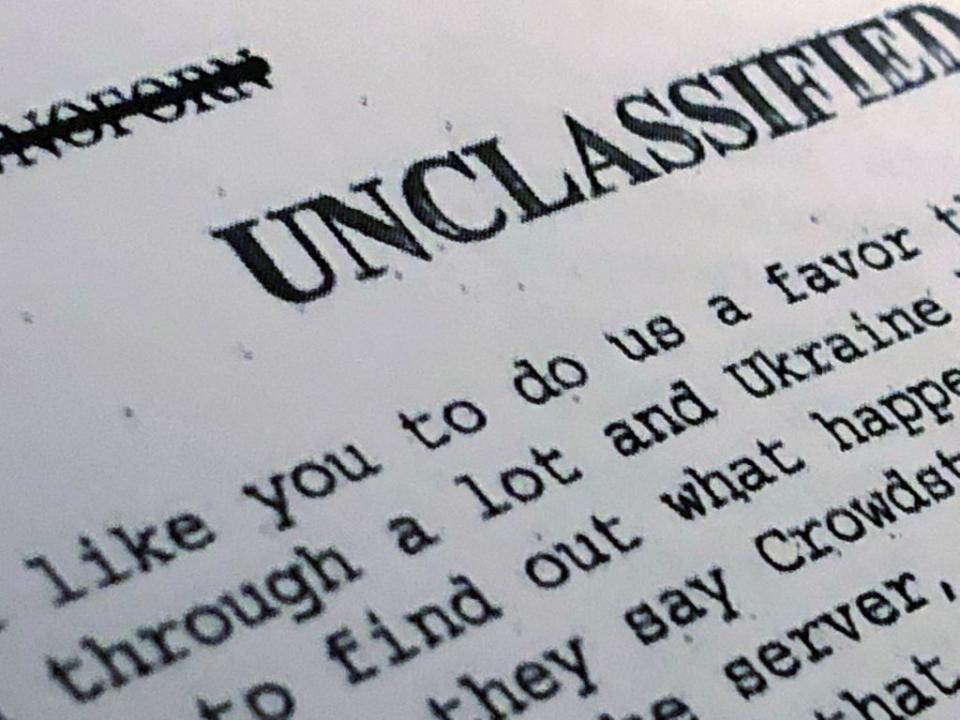Two linguists explain why calling the Ukraine memo a “transcript” is so wrong

On September 25, the White House released what it called a “full, unredacted transcript” of US president Donald Trump’s phone call with president Volodymyr Zelensky of Ukraine. In the fine print, though, it specifies that it’s “not a verbatim transcript of a discussion.” News outlets struggled to figure out what to call it, with the New York Times calling it a “reconstructed transcript” and the Washington Post saying “rough transcript.” Before long, #NotATranscript was trending on Twitter, as people recognized something fundamentally misleading in calling a document a “transcript” if it was not a verbatim record of what was said. But what’s behind this, and why does it matter?
When people communicate, it happens in a certain time and place, among certain people, for specific reasons. When that act of communication is reported on later, that’s a new communication with a different context and different meanings. And so it is with a conversation between heads of state, the “transcription” (or whatever) of that conversation for official record-keeping, the declassification of the records for the press, and the publication of the declassified memo: Each of these social actions involves different participants, communication channels, and consequences.
Calling it a transcript influences the way the public, at the end of this chain of recontextualizations, interprets the memo—even if the fine print specifies that it isn’t actually verbatim, the way it’s recontextualized matters. Keeping this in mind, readers of the memo shouldn’t imagine themselves as a fly on the wall in the Situation Room. Even a true transcript is only a partial representation of a conversation, and calling this document a transcript leads readers to interpret it as a complete record of what occurred, when it cannot be.
For anyone who wasn’t in the Situation Room listening to the phone call, we only have the text of the memo to guide us, and this is why we care about its status. To begin with, there’s no way an entire half-hour conversation could be recorded verbatim in only five pages. We understand a “transcript” to be a complete record of an entire conversation, so calling this document a transcript forces us to wonder what’s been left out.
What’s more, some experts who work with recordings make note of pauses, changes in pitch, facial expressions or body movements that accompany talk, and even then, they are constantly aware that certain aspects of the original conversation will never make it into even the most detailed transcript. If you’ve ever read a tweet and been uncertain whether it was meant ironically, you’ll understand why they bother—all of these things give us vital information about what people are saying, just as much as the words they use. This is true regardless of the language in which communication occurs, and Zelensky is, in any case, multilingual and reportedly fluent in English.
That level of detail is not necessary for official White House record-keeping, but the principle still applies: ambiguous documentation muddies the waters. The document released by the White House seems to have been produced using a combination of White House staffers’ recollections of the event, actual recordings of the call, and automated voice recognition software, so we don’t know which parts of the document reproduce what Trump and Zelensky said and which reflect the anonymous note-taker’s memory, or possible inaccuracies, let alone tone of voice or other clues like pauses.
If we’re going to make sense of this document, it’s essential to be clear on what we’re looking at. A lot of discussion has revolved around whether there is evidence of a quid pro quo—whether Trump offered aid to Ukraine in exchange for assistance with his reelection campaign. Trump often speaks obliquely about sensitive issues, and when the memo reflects him saying that “the United States has been very very good to Ukraine … I would like you to do us a favor though,” that’s not an explicit statement that if you do x, we will do y. Instead, it relies on an understanding between participants that is sensitive to nuances in tone of voice as well as a shared sense of the personal and political relationship between them and their countries.
This isn’t unique to Trump; if I said “It’s cold in here,” you would use subtle clues to figure out whether I’m making an observation or asking you to close the window. Communication depends on our ability to understand what is implied just as well as what is actually said.
By presenting “recollections” as if they were verbatim, and by omitting portions of the conversation as well as its context, the White House maintains more control over the content of the document than it would have over an actual transcript. Calling it a “transcript” is spin, giving the impression of transparency without being transparent. The words we use to name things matter; if we call it a transcript when it is not, we give readers the mistaken impression that they are actually witnessing a conversation. In fact, it is an entirely different kind of record that cannot make claims to authentic and faithful testimony.
Sign up for the Quartz Daily Brief, our free daily newsletter with the world’s most important and interesting news.
More stories from Quartz:
